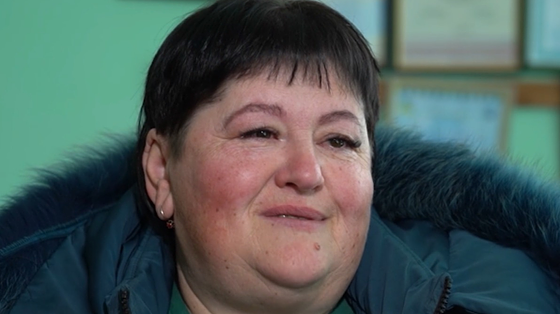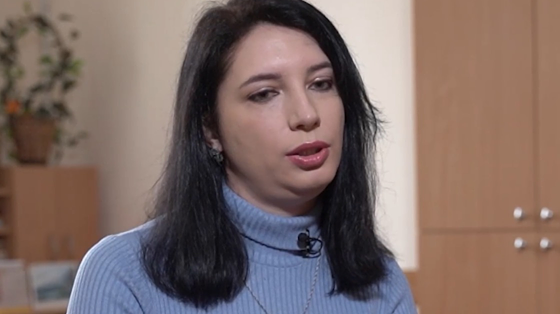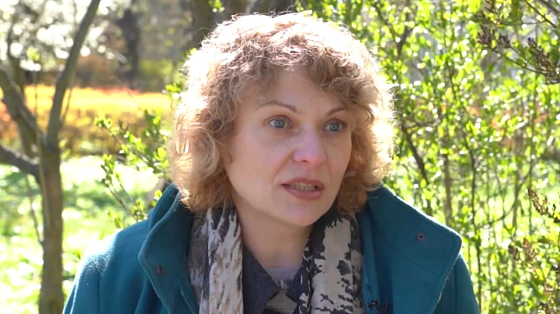Literally 300 bodies passed through his hands. Bodies of tortured and killed residents of Bucha and Irpin towns.
Conceptual artist Oleksander Krolikowski has worked at the Vyshgorod morgue as a volunteer for almost a month. Dozens of dead bodies were brought there every day for further identification. Bodies with scorched eyes, bodies of people shot in the back from machine guns. The artist recorded part of the work making some photos and videos.
Oleksander plans to reflect the tragedy in art. His story is about death, hope and heroes in the metamodernism era.
Humans became humans when they began to bury the dead. If there are no places of burial, then we do not know, maybe it is an animal. An animal runs away from a dead body because it is frightened, while humans overcome their fear and bury the dead.
My name is Oleksander Krolikowski. I am 39 years old and I am an artist.
We are now in Vyshgorod town near Kyiv. I was born in Donetsk and, let’s put it this way, as a personality, I developed in Donetsk, and as an artist – in the Crimea. I lived in the Crimea, and since 2014, I have been living in different places. Currently, I live in Vyshgorod town.
When the war broke out, I was sick with COVID. I woke up and I saw some explosions, some kind of gleam on the horizon, which could be seen through the window. I realized that the war began. I was not surprised. In the autumn, when I was in Sweden… I received a scholarship, and when I was in Sweden and when the Russian troops approached the borders, I realized that they would not be withdrawn. It was just a matter of time. And when I came back from Sweden, I waited for it all the time. I knew it would happen. And when I was told to leave, I said, “I’ll stay, I’ve been running a lot.” When I recovered (it was in four days), on the first day I decided not to go anywhere. On the fourth day, I went to the military commissar’s office, but nobody knew anything. And I was told… Since I had not served in the army, I was told that it was better to follow the humanitarian line. I went to the town council, where the humanitarian office was, and registered as a volunteer.
At first, I dealt with various matters, then I started to coordinate logistics, and after the de-occupation of Kyiv region, they started to bring a large number of bodies from Bucha and Borodyanka to a local morgue in Vyshgorod. At first, other volunteers went there and I continued dealing with logistics and coordination, but the next day I was told, “We cannot do it. It is unbearable.”
I went to the morgue myself. I didn’t know if I would be able to handle it. I buried my grandparents, I buried my father and mother, I buried my best friend when I was 14, but all that was not the same.
When I came, I was faced with a different situation. There were people there who were shot to death, people who were tortured, who were disfigured. It could be a bit similar to the death of my friend. He was run down by a car, but it was a long time ago for me. I didn’t know if I would be able to cope with it. However, since no one wanted to go, I worked in the morgue for four weeks without breaks. It takes three people to carry a dead body. The three of us worked uninterruptedly and, interestingly, my colleague was a musician from Hertz duo. He is from Zaporizhzhia.
As we worked, we said that there are three stages or levels of handling the body. The first one is when you take the bags and carry them. The second one is when you can touch and take the body through clothes. The third one is when you can help, for example, the police to undress the body. And the fourth level is to cut, but volunteers did not do that.

During the first week, I carried the bags with the dead, and then the police asked me to help undress the bodies. Those were mostly civilians. Only once I dealt with the military from a group grave. About 90 percent of the bodies were civilians. Those who were found on a street were in a worse condition, while those who were dug out were in a better condition because the earth was cold.
We worked together with a local forensic pathologist and the police. The police documented the facts and this was posted on a Telegram channel so that relatives could see it, but that was a ghastly sight. Then the French forensic gendarmerie came, which dealt specifically with war crimes. That is, we also found it… I mean, when the bodies were delivered, they were examined and put into a large refrigerator like a truck.
Clearly, there was not enough space inside. The first days it was catastrophic. It led to some unpleasant situations, because in order to find someone at the end of the refrigerator truck, you had to walk over the dead bodies. This was one of the most unpleasant experiences I have ever had. I had to apologize to the dead.
As these are people, and it’s really horrible for your mental state. Mykyta Havrylenko, Serhiy and I, there were three of us, we decided to make logistic corridors so that the bodies would be numbered, there would be passages or tiers and we could do our job with more respect for the dead. We developed the layout, re-arranged the bodies and even the police were surprised. They did not think we would do it. It was not necessary, but this was not only for our psychological or mental [state], but also because you see people, they died a horrible death, and you feel that you want to give something to them. Some of them had no relatives.
It was really striking. For example, there was a body and the eyes were scorched. This had been an act of torture, most likely to a still living person. The eyes were burnt by something. Or an elderly woman whose body was shot through with a machine gun along a diagonal line, and even if this woman said something to them, it was madness to shoot an elderly woman.
There were many women, almost half of the bodies. What could they do to them? I cannot… These were bullet shots, but there were also some charred bodies. They were not burnt completely. Half of the body was burnt, and half was not. This is really staggering when relatives come to take the body. This is a tragedy. And when the body is difficult to recognize, you need to have a talk. We asked if people really wanted to see the body, because it was a horrifying picture and they might need some time to prepare for it. For example, we said, “What if you come up to it, but she will not...?” Because there will be even more stress. Such things are very striking. We thought about how it would affect people’s mental condition.
We decided that we would reflect this in a project in the future. I filmed it on a camera and took some pictures of this work. I tried to make some “poetic” picture.

I recalled how I talked to my father about death and wanted to make a poetic picture. I understand that I will never be the same as before. That is a fact. I hope that it has changed me for the better.
I have always been on the side of humanism and humane attitude, and now my position has become even more… Well, I cannot pick the right words. I understand more structurally how to be a humanist. I have a culture of feeling. The structure of feelings inside me in relation to the position of humanism has developed; and when evil comes, it comes from ordinary people. These soldiers who came here, they are also ordinary people.
They cannot all be downright maniacs. But evil can break out in a person if the person lived somewhere else, somewhere in the depth of the countryside, where there is only alcohol addiction and violence. And this evil can break out at some point, and then we need to protect people. This is very important and we must protect the people. The protection can come not only from the military, whom we greatly respect for the possibility to be in a peaceful situation now and talk about such things. It can also come from volunteers who transported bodies; psychologists who work with family members.
They are also defenders who protect people from violence. Now we see those who protect innocent people and lay down their lives in order to do something better in life. This is heroism. Let’s call it a goal, a heroic era. This is when a person might be weak, but still can do something heroic. I would like to do… just express my structure of feelings. This will partly show the attitude to that matter. I think…
I talked to various people and I asked them what had changed in their attitude to death, to heroism… I talked to them and adopted their thoughts, discussed their situations, and the ideas that I express are not just my thoughts. They are both my thoughts and insights of the people I talked to, who convinced me of something. They don’t deal with things like that, but someone has to become their voice.







.png)



